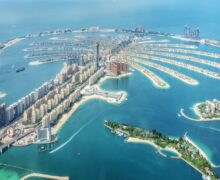
Role of Oxygen in Polymerizing Cargo Inhibition – Shakhawet Hossain (17)
(Reproduced from an Oil Major’s internal post by the author)
Chemical tankers of ≥ 8000 SDWT, built on or after 01 Jan 2016, are required to inert tanks of flammable products, with nitrogen. Some in the Industry require this for existing ships as well, provided that such ships are fitted with operational nitrogen generators of adequate capacity. Being a flammable product, the inerting requirement applies to Styrene Monomer. Those involved in the chemicals shipping will realize the dilemma in inerting Styrene Monomer tanks, because Styrene Monomer has to be transported in inhibited condition, mostly with oxygen dependent inhibitor p-TBC (para-tert-Butylcatechol). I.e. the tank atmosphere is expected to contain oxygen below 8% by volume for safety reasons but at the same time the tanks must also contain sufficient oxygen for the inhibition mechanism to be effective. Up until MSC/Circ.879 on the equivalency arrangement for the carriage of Styrene Monomer came into force, IBC Code did not support inerting tanks containing product inhibited with oxygen dependent inhibitor. IMO supports a minimum of 2% oxygen by volume in the vapour space of cargo tanks containing products inhibited with oxygen dependent inhibitor. On the other hand in line with the studies by CEFIC and MONSANTO, a major styrene manufacturer has raised their minimum acceptable level of oxygen in the vapour space of cargo tanks containing products inhibited with oxygen dependent inhibitor to 4% by volume. However, this is a separate issue and in this article I shall focus on how a particular inhibitor may or may not be considered oxygen dependent depending on the products it used in. This is p-TBC (para-tert-Butylcatechol) and those in the chemicals shipping industry will immediately recognize this as an oxygen dependent inhibitor used in Styrene Monomer.
But is this always the case?
The folks from the LPG industry will invariably say no. As a matter of fact, some may not even be familiar with the concept of oxygen dependency of inhibitors. Guidance on inhibitors is provided in both IBC and IGC; where there is no mention of oxygen dependency in the IGC Code
Therefore, those switching between LPG and Chemicals shipping may find this article interesting.
‘Self-reactive Products’ are major hazards in the chemical transportation industry. Absence and/ or inadequate stabilizing conditions will lead to loss of control with consequences such as peroxide formation and polymerization. Styrene Monomer and Butadiene are two common self-reactive products transported on ships. Although both of these products use p-TBC (para-tert-Butylcatechol) as inhibitor, their polymerizing chemistries are different.
Inhibition is a complex chemical process and all possible conditions leading to the formation of certain types of polymers have yet to be clearly understood by scientists. Nevertheless, it may be helpful to have a basic awareness of the processes in order to understand the rationale behind a control barrier that is applied in a completely opposite way for these two products.
Radicals are formed when Styrene is subjected to heat and/ or light. These radicals react with the dissolved oxygen in the Styrene to form peroxides. In absence of adequate (>10 ppm) oxygen these radicals react with Styrene molecules to form polymers. Eventually, the peroxide radicals tend to react with Styrene to form peroxide chains (poly-peroxides). To mitigate this process p-TBC is added to liquid Styrene as an inhibitor. Adequate (15 – 20 ppm) p-TBC in Styrene scavenges the peroxide radicals via quinone formation. Higher p-TBC levels may be required depending on the storage conditions, processes or specific user requirements. Thus Oxygen works as the polymerisation inhibitor while p-TBC controls its efficient use and in the process both get consumed.
Butadiene
Undesired reactions involving Butadiene include, but are not limited to, formation of peroxide, popcorn polymer and rubber polymer. Butadiene readily reacts with oxygen in the air to form butadiene peroxides which are extremely dangerous, particularly when concentrated and heated. Butadiene peroxide plays the primary role in the formation of popcorn polymer and it also catalyzes the formation of rubber (plastic) polymer. Peroxide formation is prevented by the exclusion of air (oxygen) from the cargo tanks. Additionally, p-TBC inhibitor is used to scavenge the oxygen and free radicals that are formed as a result of the peroxide decomposition reaction. IGC Code requires minimum 0.2% oxygen by volume in the vapor space of p-TBC inhibited Butadiene tanks.
Conclusion
p-TBC is an oxygen dependent inhibitor when used in Styrene Monomer but not when used in Butadiene. Therefore, presence of oxygen is a control barrier for Styrene Monomer, whereas exclusion of oxygen is a control barrier for Butadiene. As such the IMO MSC-MEPC.2/Circ.14 requirement of indicating the minimum level of oxygen required in vapor space of p-TBC inhibited cargo tanks in the
Certificate of Protection is applicable for Styrene Monomer, not for Butadiene.
Md Shakhawet Hossain (17), MSc (Maritime Studies), MNI, Serving Shell Chemicals as Marine Technical Advisor for the Asia Pacific and Middle East region. He worked in the QHSES assurance field over a decade. Annex-I/II cargo custody and care is his area of expertise.













Recent Comments